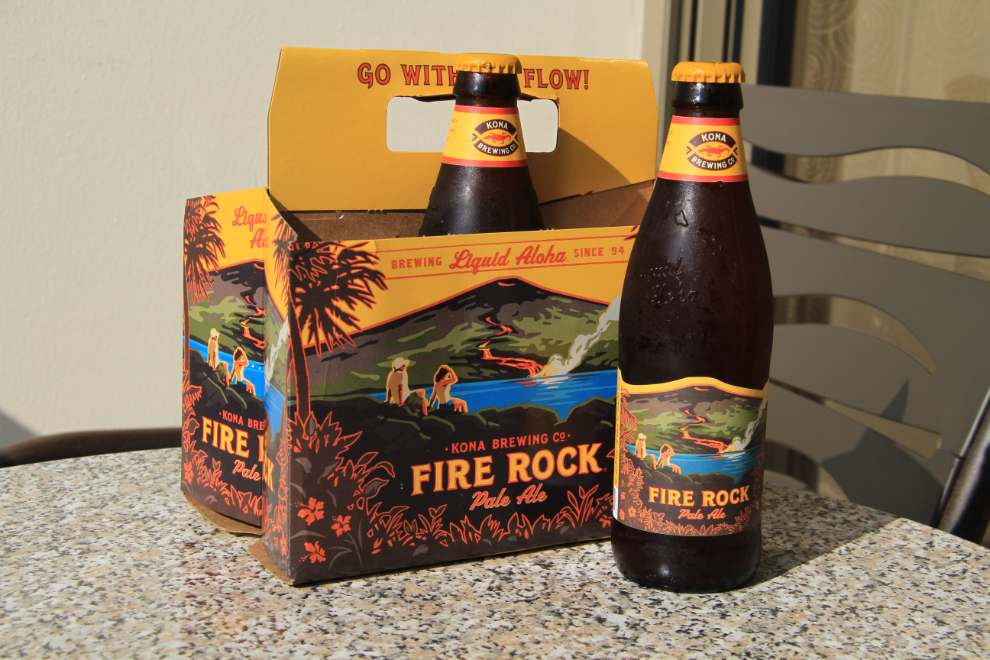A day at Pearl Harbor – Pacific Aviation Museum
This is part 2 of our day at Pearl Harbor, which began with about 3½ hours at the USS Arizona Memorial. We would have less than 2 hours to go through the Pacific Aviation Museum, which I knew would not be enough. It had become clear that to see Pearl Harbor properly requires a well-planned 3-day visit, not a few hours.
My regular readers know that I’m “just plane nuts”, so there’s a lot more information about planes here than normal people will want to go through, but I hope that you all enjoy this look through the museum.
At 3:00 pm, after about a 15-minute wait, our shuttle bus left the USS Arizona Memorial to take people to both the Battleship Missouri and the Pacific Aviation Museum.
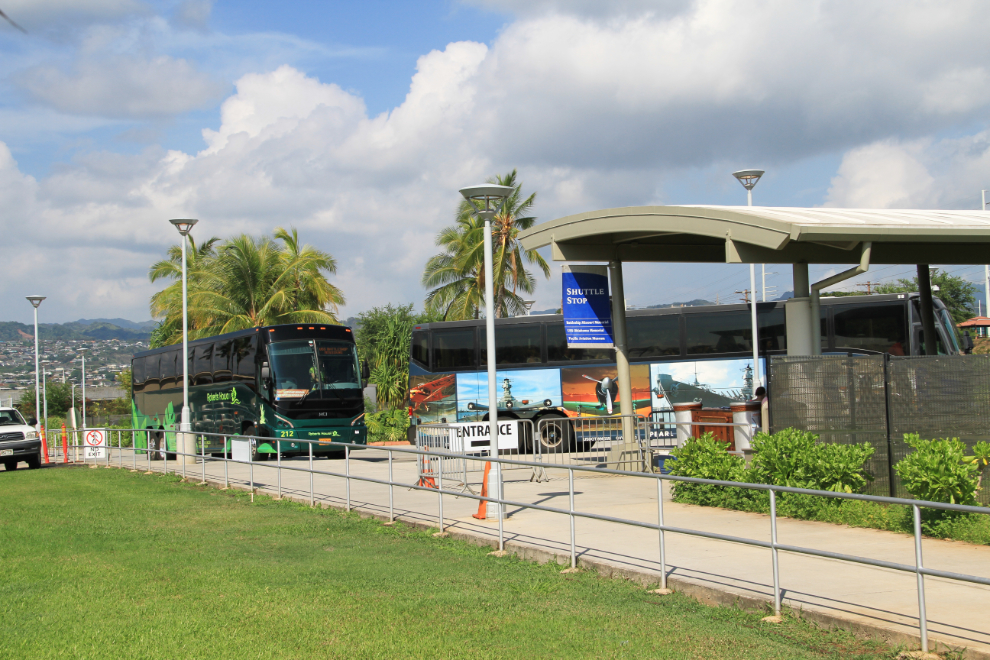
Hanging in the entry hall of Hanger 37, the first of 2 hangars to go through, is a 1/3 scale model of the first airplane to fly in Hawai’i, a Curtiss P18 Honolulu Skylark. On December 31, 1910, thousands of people who had paid $1 each watched pilot J. C. “Bud” Mars make history with it at Samuel Damon’s Moanalua polo field.
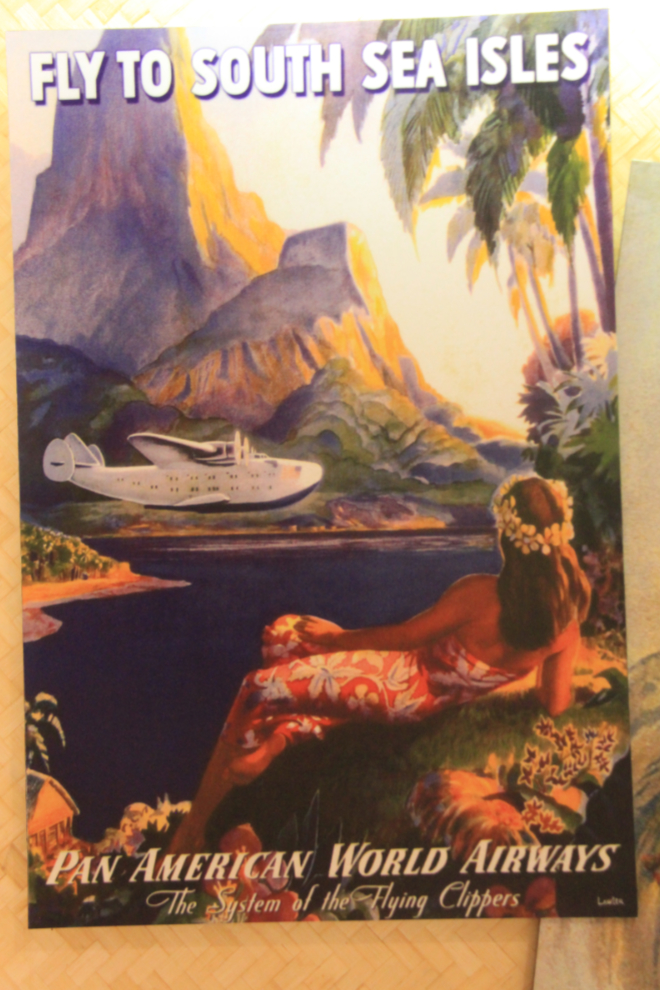
After paying $25 per person admission, the museum displays begin by showing what a paradise Hawaii was for military personnel.
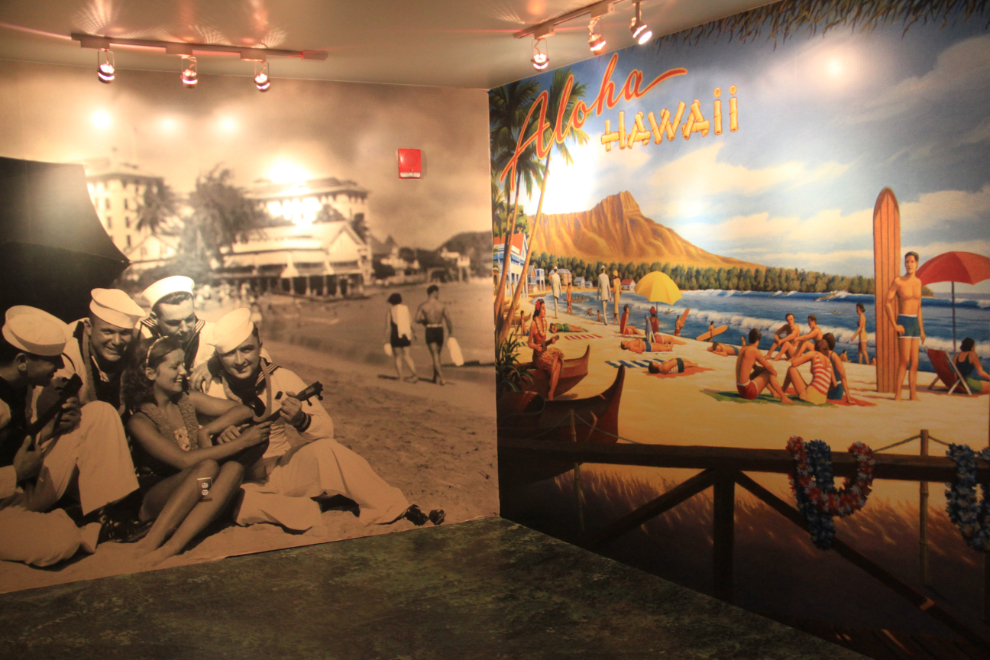
Shortly before 08:00 on on Sunday, December 7, 1941, though, that paradise turned into hell for many.
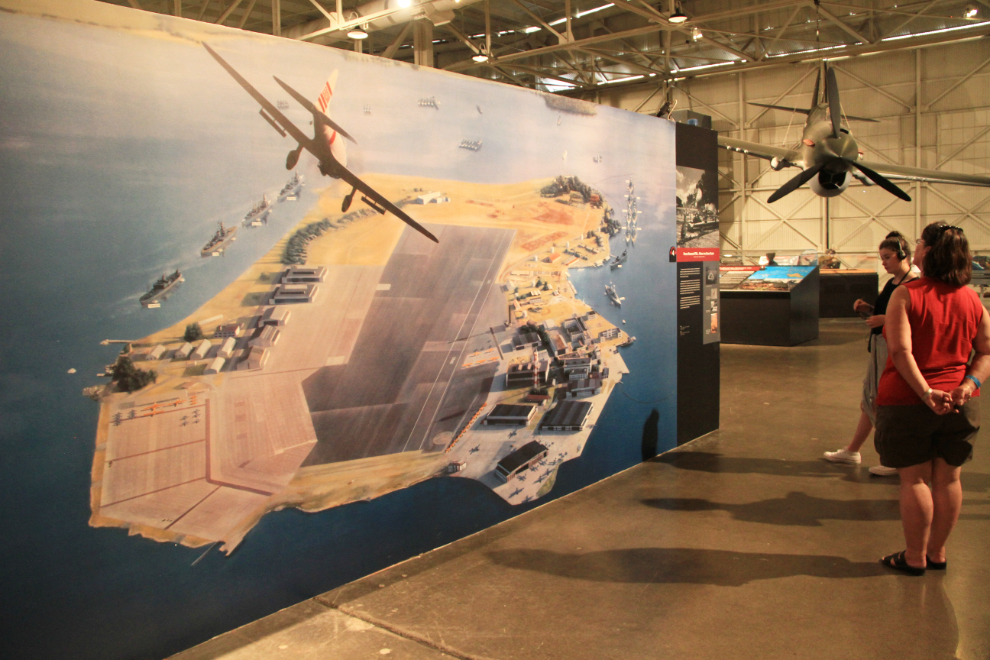
The first display aircraft is a Mitsubishi A6M2 Model 21 “Zero”. Although portrayed as one of the Pearl Harbor attack participants, this particular aircraft was built in December 1942. It had a maximum speed of 335 mph, but has been re-powered with a Pratt & Whitney R-1830 to keep it in flying condition – only one flyable Zero in the world still has the original engine.
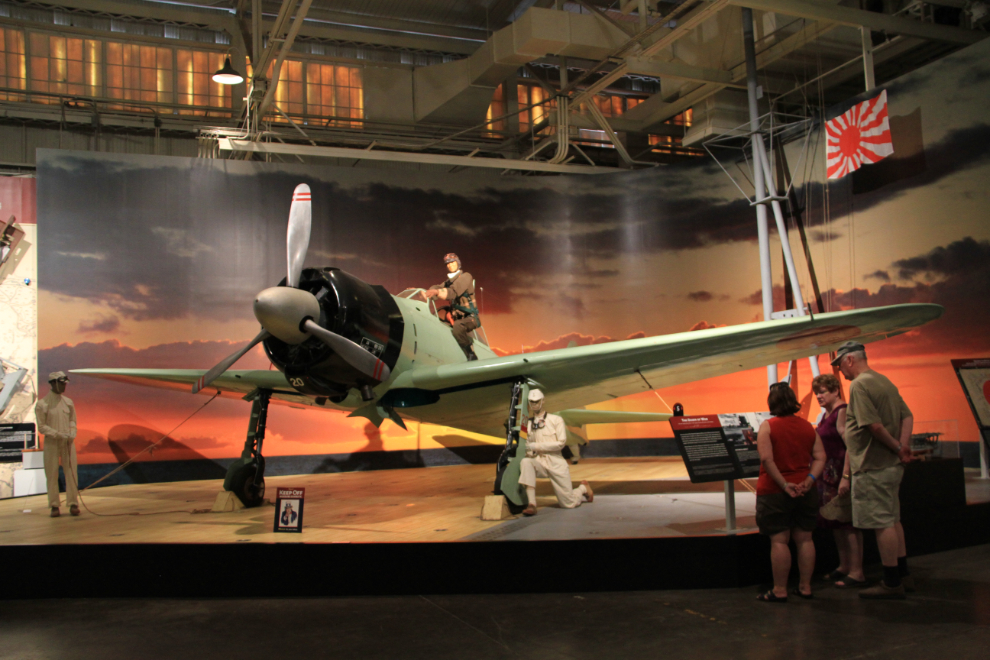
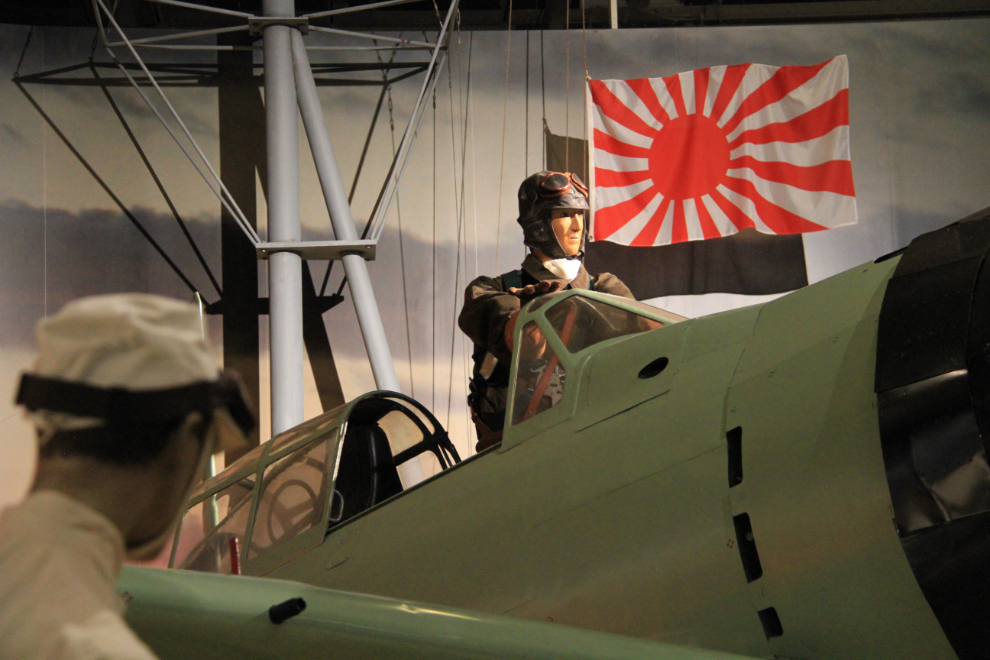
The Curtiss P-40E Warhawk was the principal Army fighter on Oahu in 1941. This aircraft is a replica, painted in the markings of the one flown by Lieutenant Ken Taylor, one of the few pilots able to get airborne during the attack on December 7th. He was able to shoot down 2 Japanese aircraft before being wounded, but he saved his aircraft.
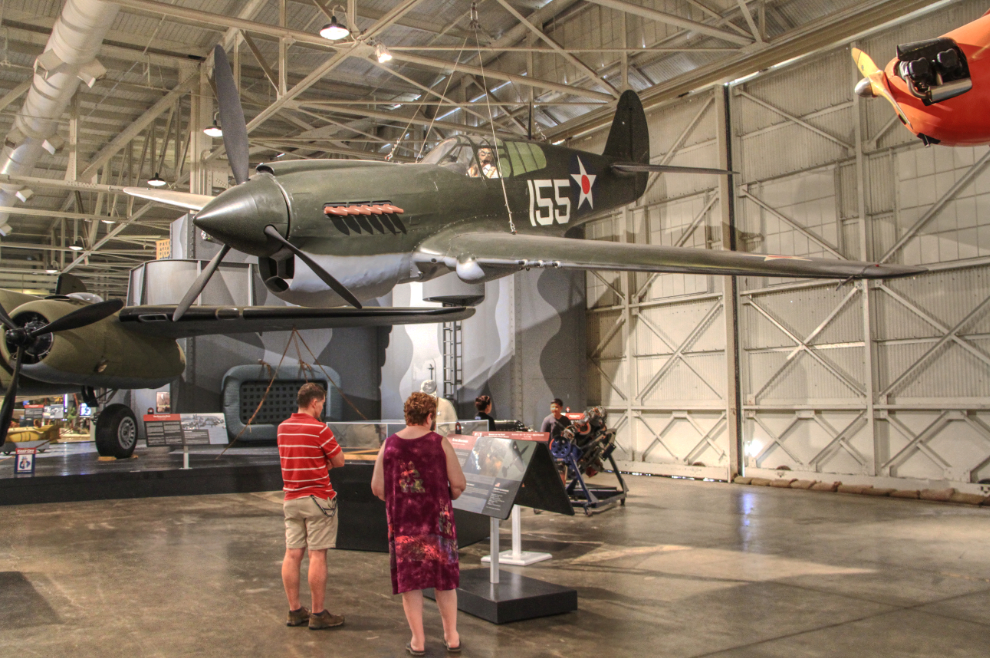
A secret plan to bomb Tokyo using modified land-based Army B-25B Mitchell bombers launched from an aircraft carrier was developed by Lieutenant Colonel “Jimmy” Doolittle to boost American morale and shale Japanese confidence. This flight deck scene shows “Ruptured Duck” pilot Lieutenant Ted Lawson talking to Doolittle prior to their very successful April 18, 1942, attack at targets in the Tokyo area. This particular aircraft was built using parts from several wrecked B-25J airframes.
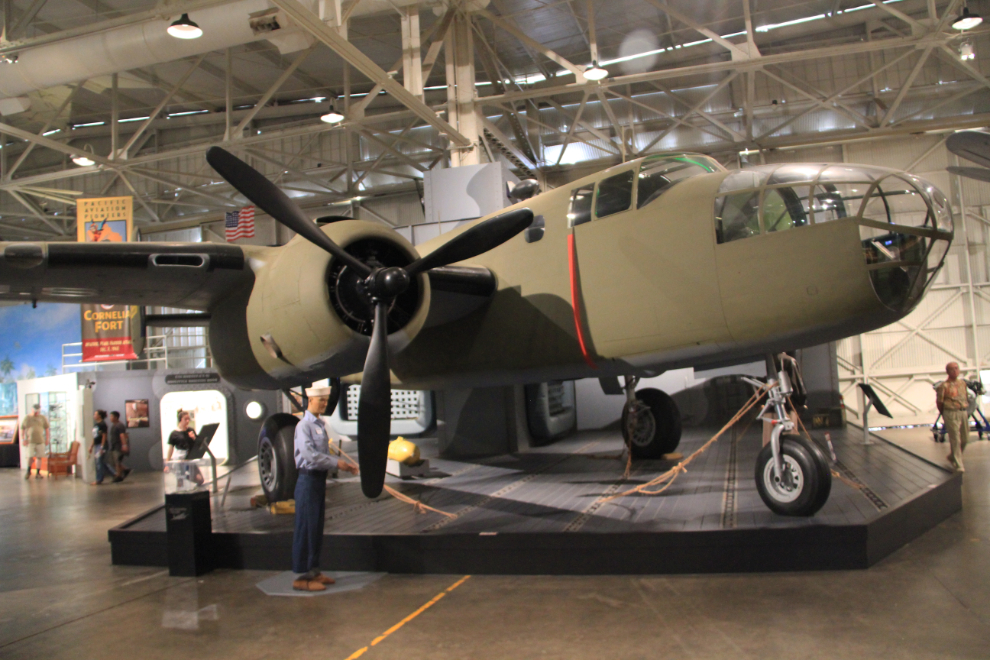

The Douglas SBD-3 Dauntless, operated by both the US Navy and Marine Corps, is regarded as the most successful American dive bomber of World War II. They could drop bombs while in near-vertical dives, and were responsible for sinking all 4 of the Japanese aircraft carriers at the Battle of Midway, a success that turned the tide of the war in the Pacific.
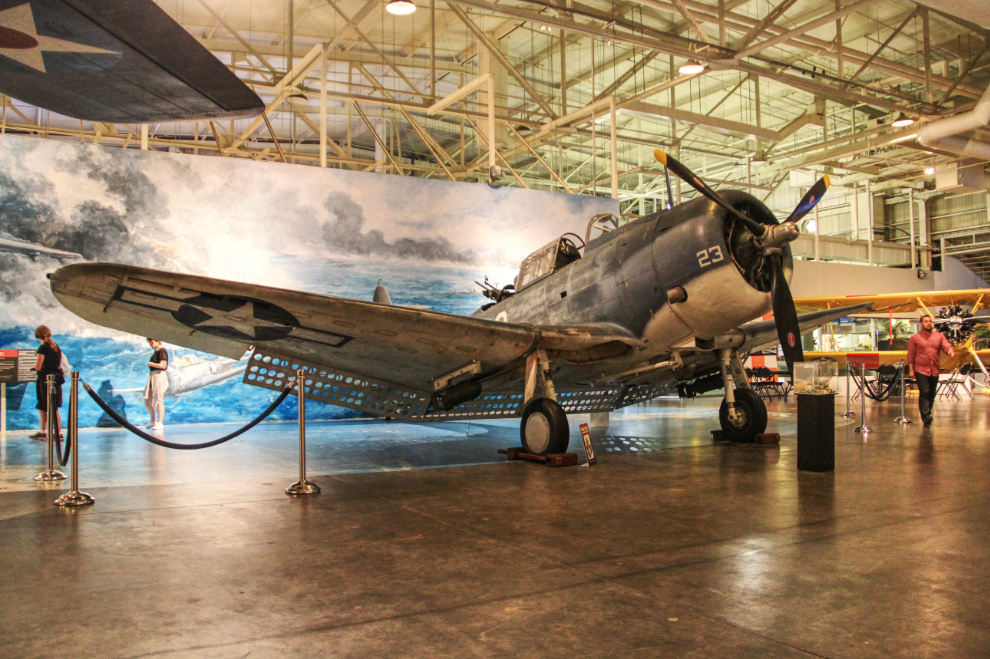
In this scene, U.S. Marine Captain Joe Foss, stands by as mechanics ready his Grumman F4F-3 Wildcat fighter at Henderson Field for another mission over Guadalcanal. In his 51 days based there, Foss downed 26 Japanese aircraft, and was awarded the Medal of Honor as a result. This particular aircraft, #12296, crashed and sank in Lake Michigan on June 21, 1943. It was recovered in 1991, and is now one of only two flyable Wildcats still in existence.
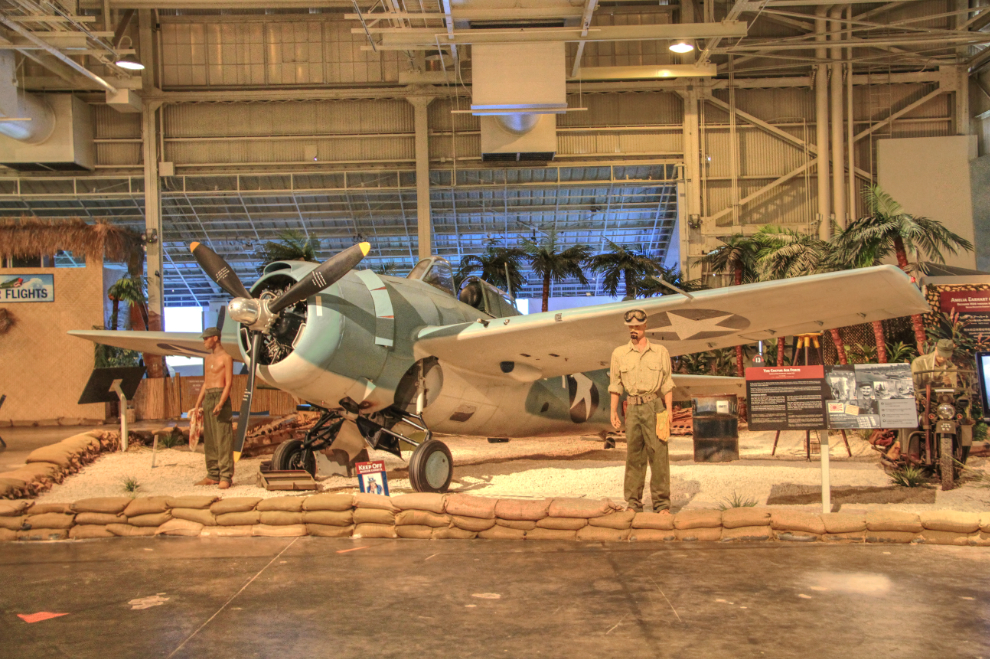
At 4:00 pm, Cathy came back to herd me on to the next hangar 🙂 As we walked to Hangar 79, this great parking sign caught my eye.
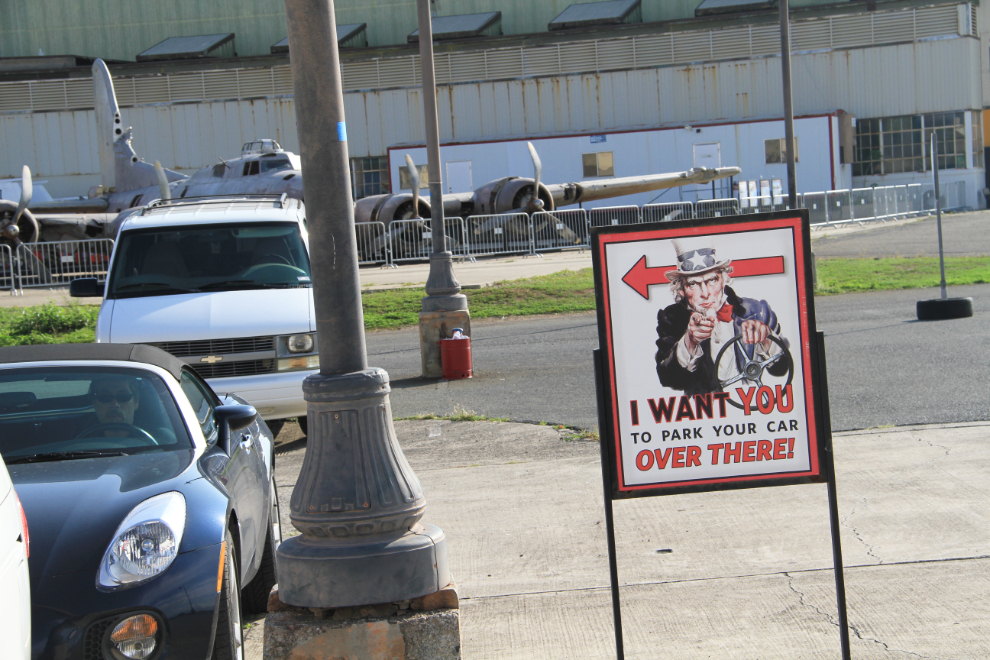
Sitting in the yard outside Hangar 78 is Boeing B-17E Flying Fortress, serial #41-2446, which first arrived in Hawaii 10 days after the Pearl Harbor attack. It was used for anti-submarine patrols until being assigned to northern Australia in February 1942. A few days later, during an attack on a well-defended invasion fleet off Rabaul, pilot Red Easton was forced to crash-land in the jungles of New Guinea. Known as the “Swamp Ghost” since being discovered in 1975, it was recovered in 2006, and recently returned to Hawaii to await a restoration estimated to cost $5 million.

The entry to Hangar 79, looking back at the control tower, is spectacular for anyone with a passion for flying machines 🙂
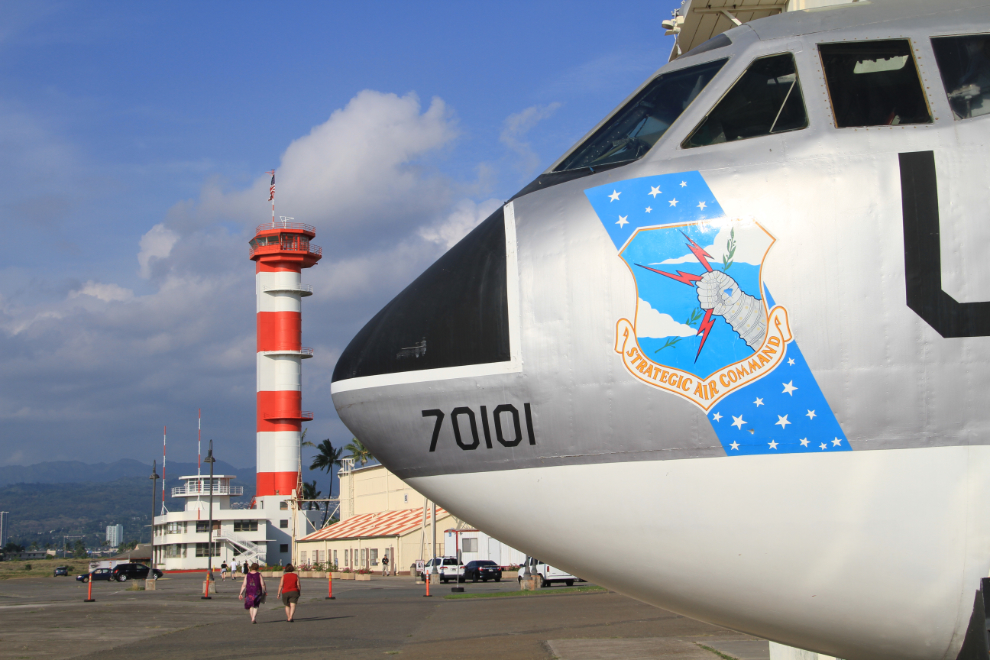
These bullet holes in the upper window glass of Hangar 79 were never repaired after the attack of December 7, 1941.
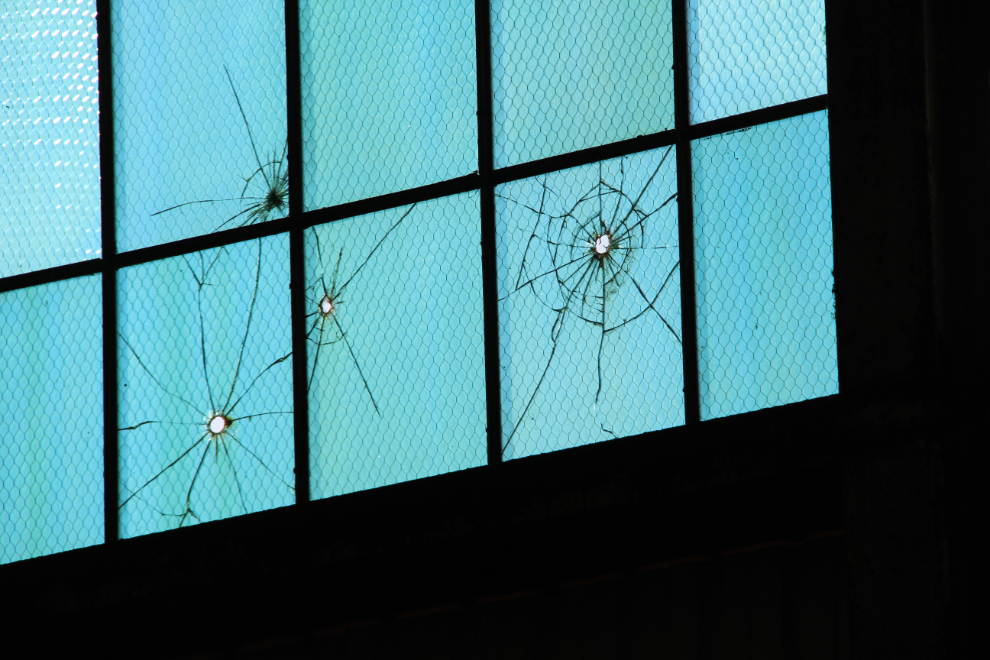
Hangar 79 is very different than Hangar 37 – no elaborate displays have been built, and most of the aircraft are newer. The documentation of each aircraft is still very good, though.
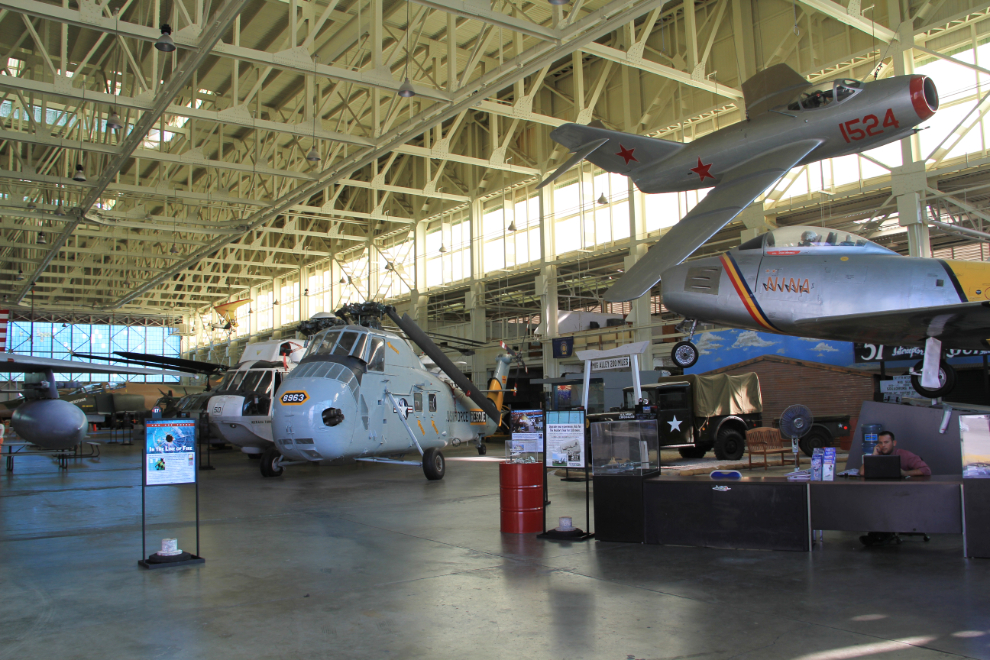
This CH-46E Sea Knight transport helicopter served with Marine Medium Helicopter Squadron 364 (HMM-364), the “Purple Foxes”, based at Marine Corps Air Station Camp Pendleton, California. Just one week ago, one of the helicopters known as the “Phrog” made its last air show appearance, as it’s being retired from service, having been replaced by the MV-22B Osprey. Space is quite tight in Hangar 79, and this photo was created by stitching 2 photos together, as even with an 18mm lens I couldn’t get it all in the frame.
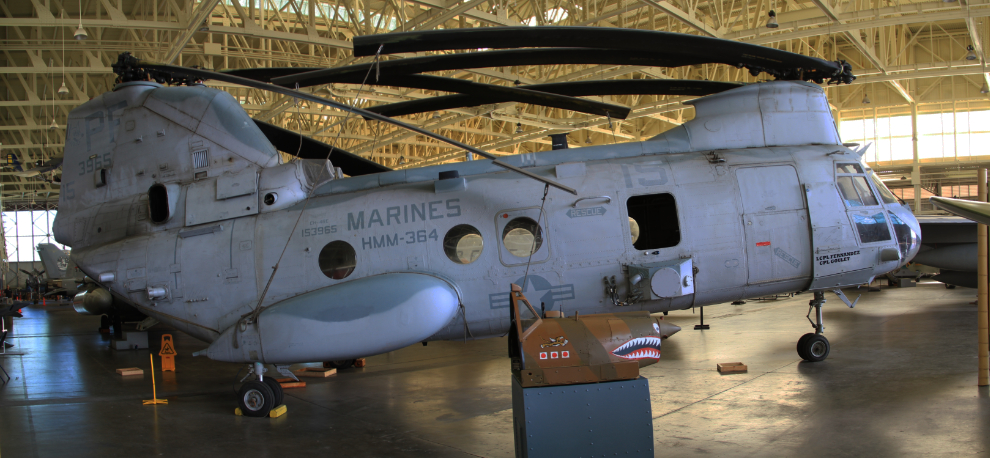
Jim starts to show us a move he made many times in Viet Nam, climbing into a Bell UH-1 Iroquois helicopter (commonly known as the “Huey”). The first Hueys arrived in Viet Nam in 1962, and served the U.S. Army, Air Force, Navy and Marine Corps in medical evacuation (MEDEVAC), transport, aerial assault and general utility roles.
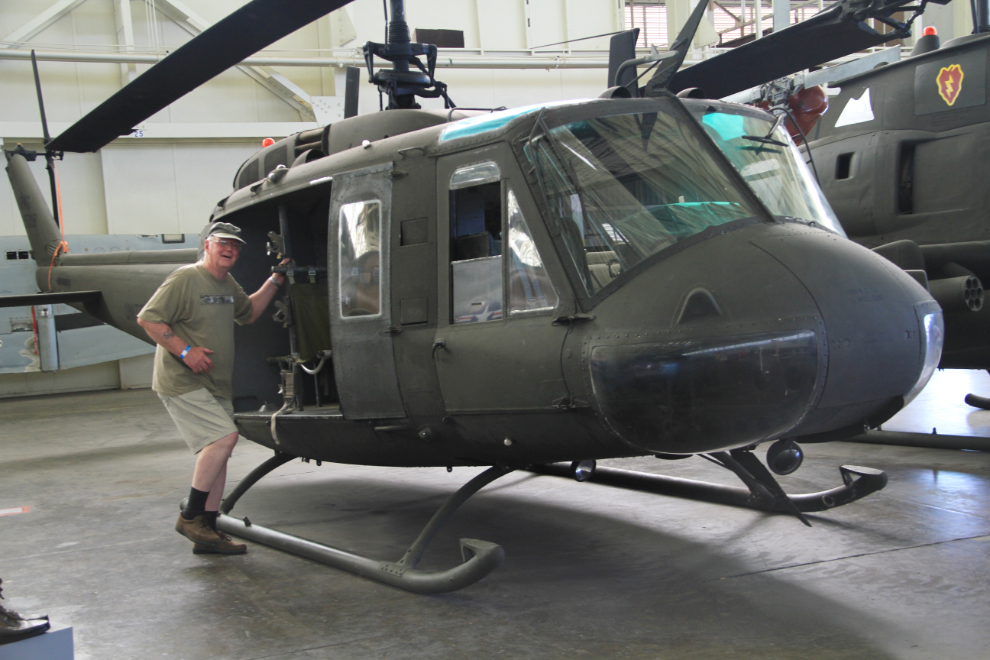
Sitting at the back of Hangar 79 is “Cheeky Charley”, a Douglas C-47 Skytrain/DC-3A that is under active restoration. This particular aircraft served in the Pacific from 1943 to 1945, then went into commercial cargo service in Australia and later Hawaii. In April 2012, with total time of 55,000 hours on the airframe, Charley was towed from the Honolulu International Airport to its new home here.

A final shot, of the sign thanking the “Hangar Owls”, the restoration crew.
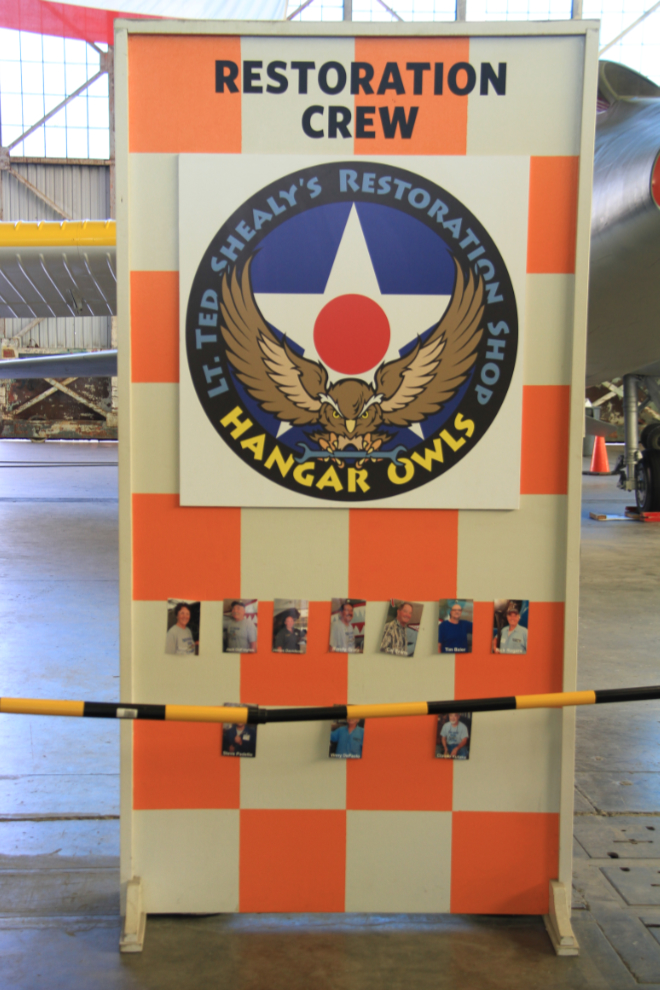
We caught the last shuttle bus as the museum closed at 5:00, and made our way back to the city. Although hot and tired, we all went to the Kani Ka Pila Grille at the Outrigger for dinner. It was, as always, excellent in every way, and a very good band was playing as well.
After dinner, MJ and Jim drove to their condo while a half-sack of Fire Rock Pale Ale in our beautiful hotel room provided a tasty calm-down for Cathy and I. We discovered this beer in Lahaina and it was usually the choice for both Cathy and I when we were in a beer mood.
